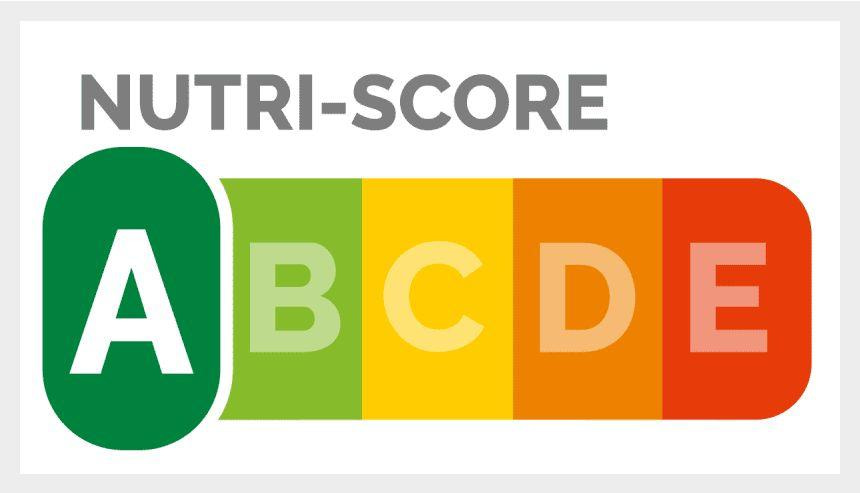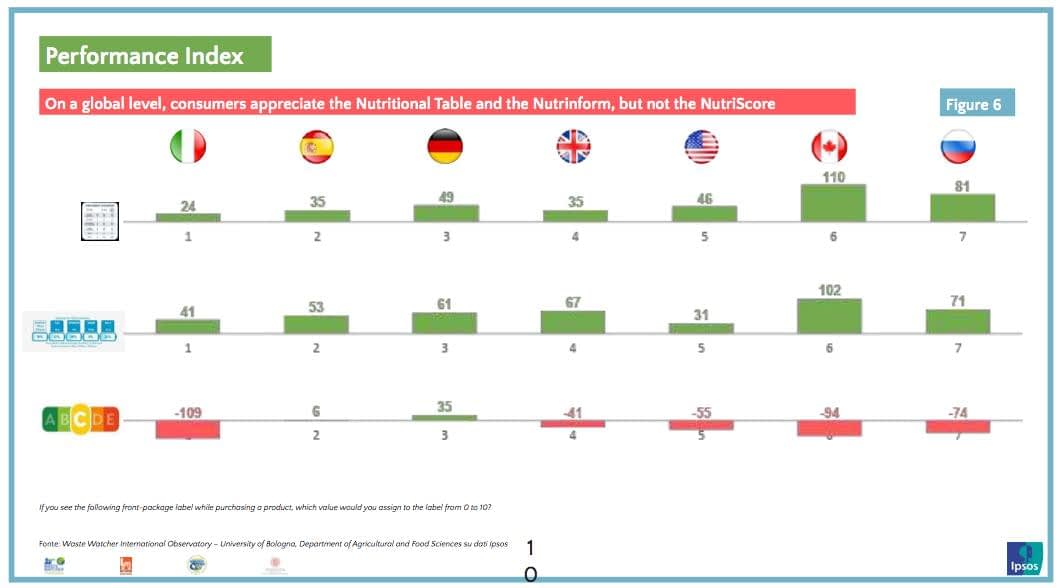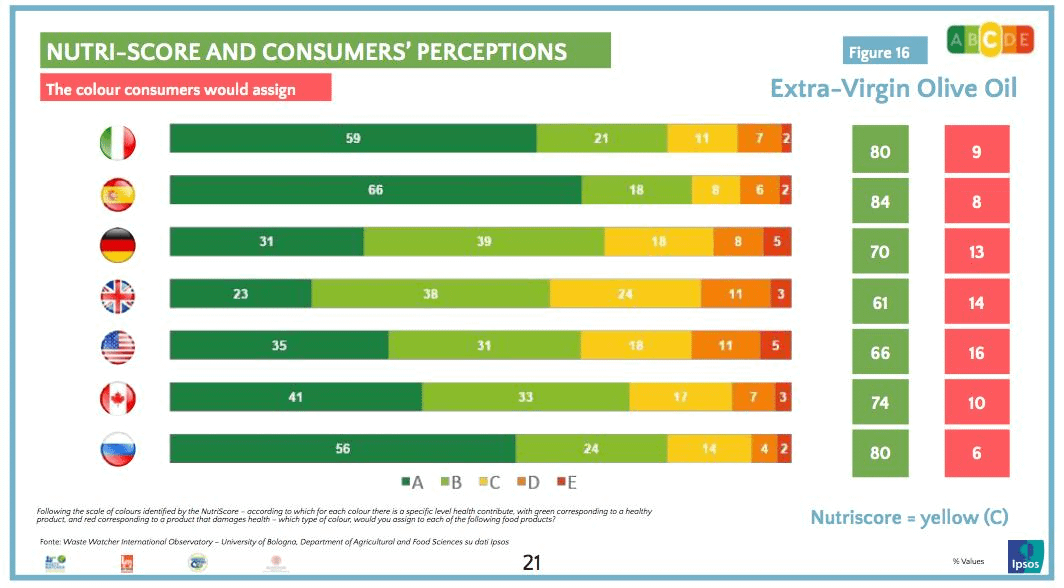A new system aims to reform the Nutri-Score front-of-pack labeling system (FOPL)and add customized options to food classification.
Available as an app for Android devices, myLabel’s Nutri-Perso allows consumers to add to the Nutri-Score ratings their profile, goals in terms of health and food sustainability, age, gender, and health status.
The colored labels do not help because it is obvious that when you see red, you will hit the brakes.
Accordingly, Nutri-Perso will then generate new scores for the Nutri-Score-rated food packages.
Developed in France by the Research Center for the Study and Observation of Living Conditions and the National Consumer Institute, Nutri-Perso allows its users to add preferences to food when buying groceries to avoid specific types of food.
See Also:Nutri-Score CoverageThese include filters against food with too many additives, pesticides or antibiotics, and food that harms biodiversity or fuels deforestation. It also promotes food that ensures animal wellbeing, good working conditions or fair pay for farmers.
In a press conference, Christophe Hurbin, founder of the myLabel application, praised Nutri-Score as “useful” but said that it could make the consumer “feel guilty” when buying poorly rated products to the point that they might stop buying those products.
“We want to bring nuance, because yes, a product might be very sweet, there is no doubt, but we still can consume it [in a reasonable way],” he said.
Nutri-Score rated packaged food items based on salt, sugar, fat and caloric content per 100 grams or milliliters of the food.
On that basis, the Nutri-Score algorithm assigns a color/letter code to the package, from the healthy “Green A” down to the “Red E.”

According to Nutri-Score creators, comparing foods by a single quantity allows consumers to choose the best products within a given category.
However, instead of focusing on the 100-gram quantity, Nutri-Perso modifies that notion adding the concept of “portion” tailored to the needs, profile and preferences of the app user.
According to its creators, Nutri-Perso will take away the “sense of guilt” in buying foods with a low Nutri-Score rating, such as chocolate or cheeses, by suggesting to its users the quantity they should consume.
During the press conference, Hurbin stressed how Nutri-Perso would not replace Nutri-Score.
However, the standard quantity in Nutri-Score is one of the reasons the labeling system is criticized by many food companies, such as cheese producers in France and olive oil producers in Italy and Spain.
Since its scores refer to 100 grams, producers such as the General Confederation of Roquefort have repeatedly said, Nutri-Score does not allow consumers to estimate the true impact of food intake in portions that might be way smaller.
That also appears to be one of the reasons Nutri-Score did not come out as consumers’ preferred labeling system in a recent multi-country survey conducted by the Italy-based Waste Watcher International observatory on food and sustainability.
The survey has traced a basic profile of consumers in seven countries: Spain, Italy, Germany, the United Kingdom, the United States, Canada and Russia.
In each country, 1,000 consumers were surveyed, their food choices and food labeling preferences were then analyzed. The representative population sample was selected by the market research firm Ipsos.

“One of the most interesting findings of our study is a strong preference given to the traditional nutritional labels which are mostly found on the back of the packages,” Andrea Segrè, an agricultural policy professor at the University of Bologna and scientific director of Waste Watcher International, told Olive Oil Times.
“When confronted with the French Nutri-Score or the Italian Nutrinform Battery labeling system, consumers showed that the third option, the traditional label, comes out as competitive,” he added.
More specifically, Nutri-Score as a whole has been intensely disliked in countries well known for their opposition to its adoption, such as Italy. However, consumers did not fully appreciate it in other countries such as the U.K., the U.S., Canada and Russia.
Consumers from Germany, the U.K., Russia, and Canada preferred Nutrinform Battery over Nutri-Score. Still, in several countries, the standard nutrition label fared even better.
The survey analyzed why each label was appreciated or disliked in every country in depth. Interestingly, Nutri-Score failed to attract consumers in Italy but still outpaced the Italian Nutrinform Battery regarding usefulness, informative potential or awareness.
Among the findings, Segrè highlighted the modest results of the so-called traffic-light food labeling systems adopted in several countries.
“It is widely adopted in the Anglo-Saxon countries. Still, in those countries, it does not seem to be really appreciated by consumers,” he said.
According to the study, most consumers want to know more about the products they are buying, including information that might not always be included in a rating score placed on a food package.
“On a global scale, what we are seeing is poor nutritional education,” Segrè said. “The colored labels do not help because it is obvious that when you see red, you will hit the brakes. Instead, you will go forward when you see green.”
“It is simple, but that is why it is wrong because you don’t need nutritional education anymore. You just have to trust whatever it is represented by the labels,” he added.
Some of the most significant criticisms of Nutri-Score come from olive oil producers. Extra virgin olive oil and olive oil are rated with a “Yellow C” by Nutri-Score, a medium classification due to their high-fat content.
According to some, including Unaprol, the Italian olive oil producer consortium, Nutri-Score does not consider the micronutrients that endow extra virgin olive oil with its unique health benefits. As a result, many professionals in the olive oil sector consider Nutri-Score to be punitive.
However, the system’s architects disagree with these assertions and insist criticism of Nutri-Score is frequently made without context.
“Olive oil is in no way penalized by Nutri-Score, Pilar Galan, a nutritional epidemiology researcher at the Sorbonne Paris Nord University, told Olive Oil Times in a 2021 interview. “Olive oil is rated C, which is the best score for added fats. This ranking is fully consistent with public health recommendations.”
In Italy, Spain, Canada and Russia, the Waste Watcher International survey found that almost half of the surveyed consumers would assign a “Green A” to extra virgin olive oil. Only a minority in all surveyed countries would classify extra virgin olive oil as currently rated by Nutri-Score.

“The reality is that if there is a possible penalty for olive oils in Nutri-Score since quantities are not considered,” Segrè said. “It does not make sense to compare extra virgin olive oil with sweetened soda drinks. You would not dress a salad with those.”
“And you would not drink olive oil as you do with a pop,” he added. “Based on our survey, it is possible that a number of consumers exposed to Nutri-Score will look at that extra virgin olive oil’s average classification and buy it less than before. Even more in countries where olive oil culture is not affirmed.”









